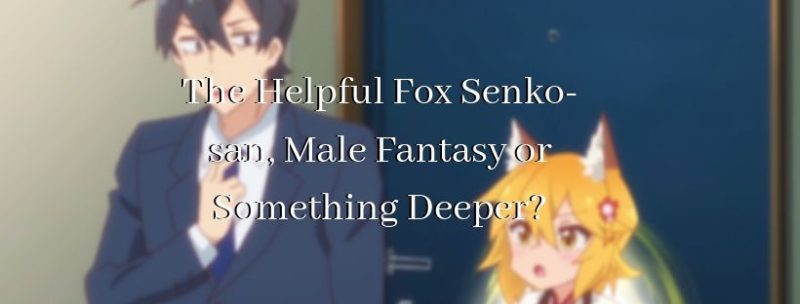
Nakano loves her soft, fluffy tail. He enjoys fluffing and rubbing his face on it. Of course, the anime strongly suggests this is sexual from Senko’s perspective. Nakano, however, has a childlike innocence–he just likes the softness and warmth–and seems oblivious to how it riles Senko.
When I first started watching the anime, it appeared to be just a male fantasy. A cute god appears who cooks, cleans, massages, gently wakes you, and otherwise takes care of your every daily need would be appealing for lonely working men. In fact, various studies have linked male well-being with traditional gender-role work division.
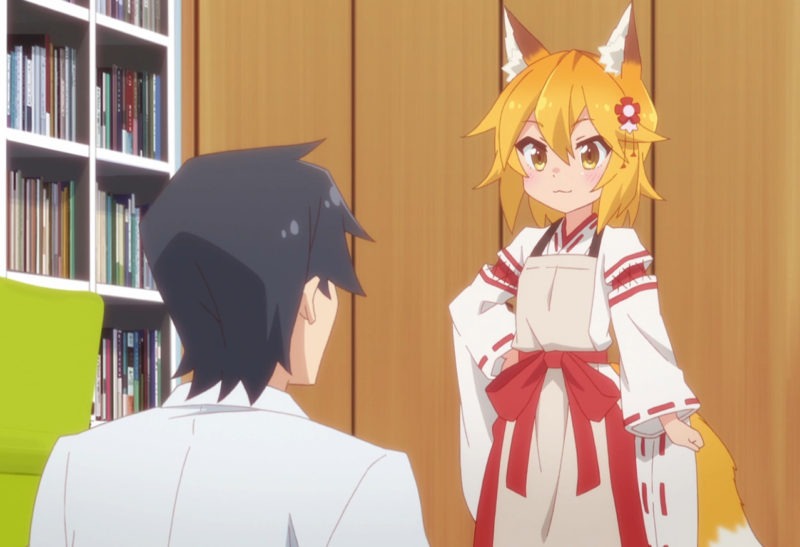
Japanese husbands with a working wife tend to have stronger depression and lower self-esteem. They also have lower work satisfaction. This has remained consistent since the 1980s (Sagara, 2006). Of course, if the men view traditional gender roles as proper, a conflict with this view affects their well-being more. Some Japanese working men resent how they have to do more housework or child rearing than their co-workers with full-time housewives (Sagara, 2006).
Women also champion the traditional roles. Kurihara Harumi runs a popular magazine and acts as a role model for “The Joy of Normal Living.” She believes traditional role division creates more happiness for both men and women. In Japan, the full-time housewife (according to Harumi) remains the epitome of femininity with the working man the “pillar of the household” (Goldstein-Gidoni, 2017). The idea of the “good wife and mother” remains a strong influence on ideas of happiness despite feminist movements.
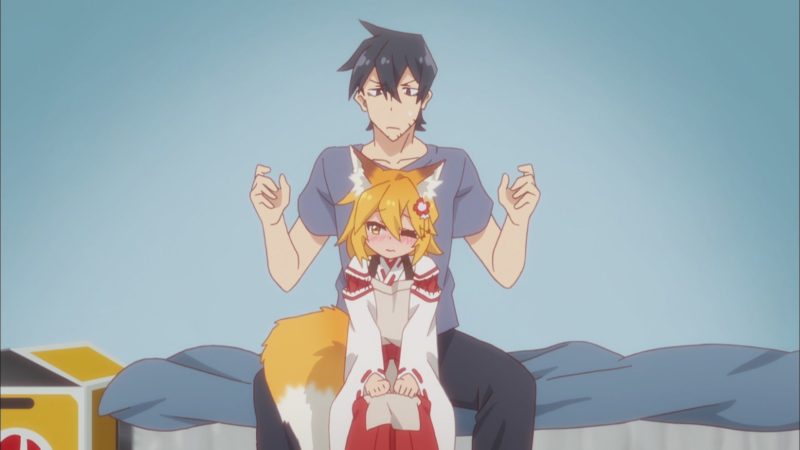
In the anime, Nakano’s sense of well-being improves with Senko at home supporting him. His work begins to feel a little less strangling as the anime progress. Although the darkness–representing his unhappiness– that clings to him doesn’t fade despite Senko’s work. Senko feels joy in caring for him–just as Harumi suggests women should feel. The anime seems to align with people who believe in traditional gender roles. Which is fine, actually. There’s nothing wrong with men and women who choose tradition. I know many women who want to be stay-at-home wives and mothers. I also know men who want to be stay-at-home husbands and fathers. And no, these men are not deadbeats. They work hard jobs, but see child rearing as the most important calling in life.
During the Roman Empire, the father would take the lead in rearing sons and sometimes daughters. They wouldn’t be stay-at-home dads, but they would take their sons with them everywhere to educate them in the family business. In fact, Julius Caesar came from a family that did this (Meier, 1982).
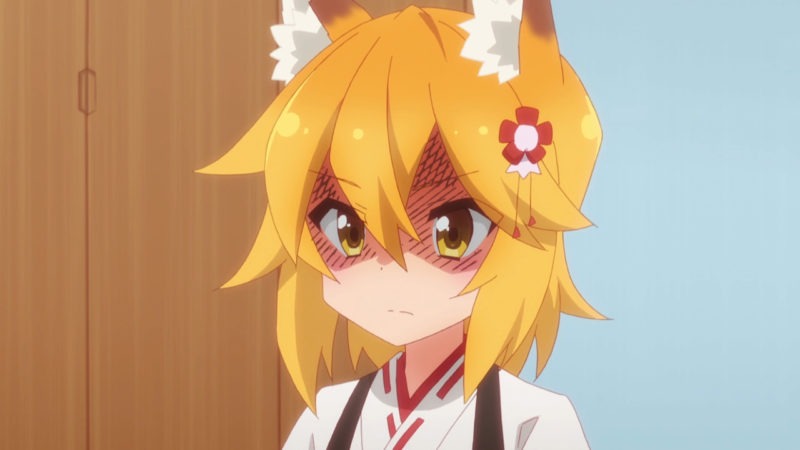
In the anime, Senko chooses to take care of Nakano. As a demigod, she doesn’t have to. She does so because she cares about his well-being.
Nakano doesn’t enforce this role division. He isn’t fully comfortable with it and balks at the pampering as Senko calls it. He comes to accept her decision, however. I know many couples that believe traditional gender roles are best, but they also don’t force that mutual decision on others. I’ve noticed a trend of disparaging people who choose traditional roles. There’s nothing wrong with The Helpful Fox Senko-san favoring traditional roles.
To the anime’s credit, it only references Senko’s lolita design for some jokes. Luckily, she doesn’t act like a lolita, and the support cast doesn’t assume she’s a child. She acts too mature for anyone to make the mistake. She merely looks young.
The Helpful Fox Senko-san goes beyond male fantasy. It provides commentary on the state of Japanese men. Nakano lives alone and is overworked. He’s a genuinely nice guy who needs to say no. At least he should from my American perspective. To use the cliche, he lives to work rather than works to live. By the time he gets off work, he has just enough time to eat, bathe, and crash only to work again the next day. What’s more, he feels guilty for taking time for himself.
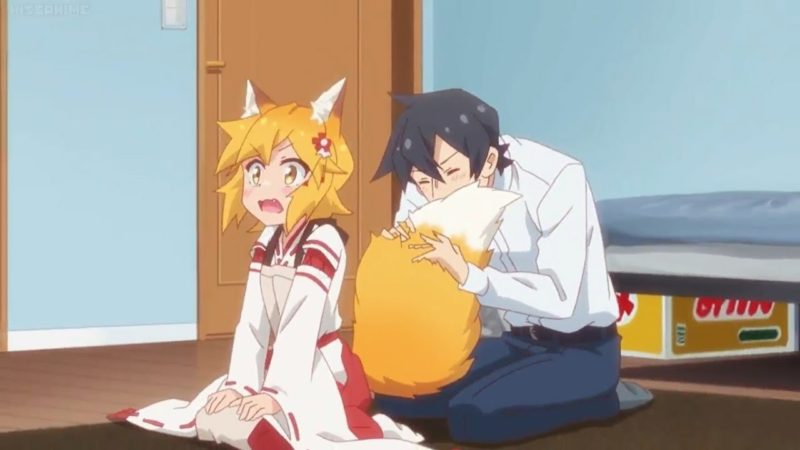
Senko crashes into his life to teach him how to live again. She uses her cooking to help him enjoy meals again. Her fluffy tail gets him in touch with his silly, little-boy side that he suppresses most of the time.
Wikipedia labels the series as a comedy. I consider it an iyashikei, or healing anime. Many can identify with Nakano’s situation. It made me think back to my days as a grocery store department manager. The anime has a gentle approach in the first season. It reminds me of Laid Back Camp in many regards.
The Helpful Fox provides a few lessons for those who are overworked:
- Don’t put work above well-being.
- Savor food. Don’t just eat.
- Enjoy small things (like fluffy tails!).
- Don’t take people in your life for granted.
- Learn to say no when yes can hurt you.
- Rest so you can be generous with your attention and time.
As I’ve learned over the past several years studying anime, even something as fluffy-looking as The Helpful Fox has layers. It points toward male psychological problems that have appeared as traditional masculinity struggles to change. It also points toward traditional gender roles as a source of joy for many people (as supported by Goldstein-Gidoni, 2017 and other studies and my own anecdotes).
I’ll admit the title of this article is click bait. But quite a few people online view anime like this one as male fantasy. I did at first! But there isn’t anything wrong with choosing traditional gender roles. The Helpful Fox Senko-san has more depth than the usual sexual fantasy romp. It offers escapism, true. It also shows how it is okay for a man to indulge “unmanly” things like fluffing a tail.
The Helpful Fox Senko-san won’t be for everyone. I wished it went deeper into kitsune folklore–it barely touches on it–but it is enjoyable as a healing, relaxing watch.
References
Goldstein-Gidoni, Ofra (2017) “The Joy of Normal Living” as the promise of happiness for Japanese women and their families. Asian Studies Review 41 (2) 281-298.
Meier, Christian (1982). Caesar: A Biography. New York:Basic Books.
Sagara, Junko, Ito, Yuki & Ikeda Masako (2006) Gender-role attitude and psychological well-being of middle-aged men: Focusing on employment patterns of wives. Japanese Psychological Research. 48 (1) 17-16.
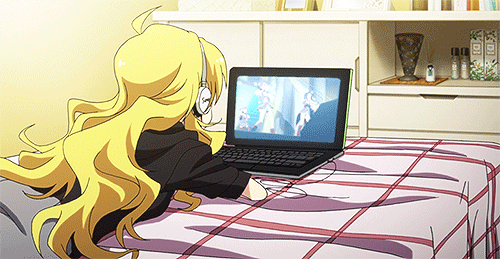
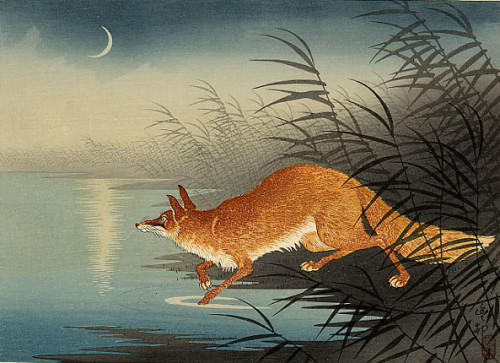
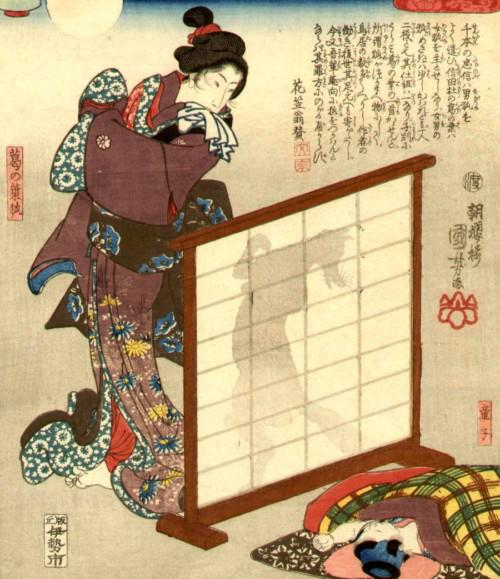
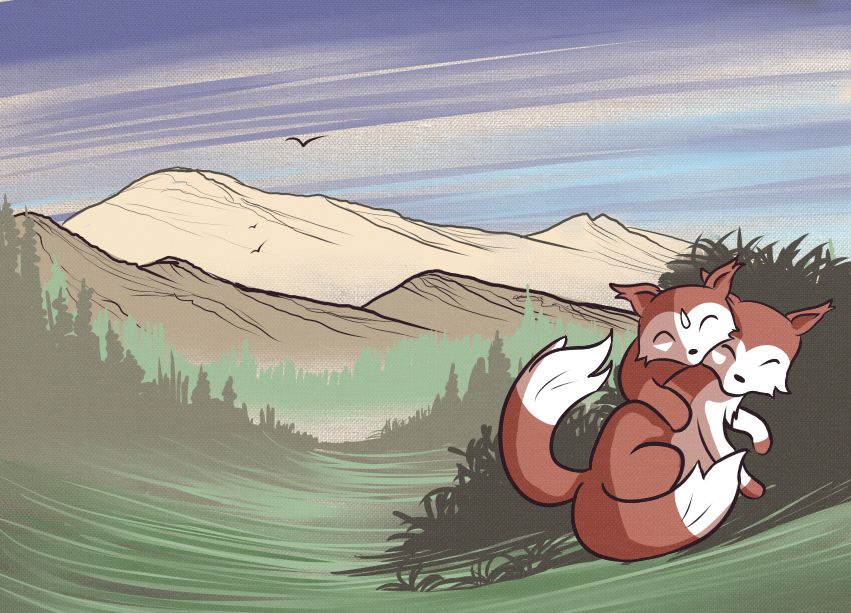
awesome article I think Senko is a pretty cool fox
(correct)
→Animal characters were created in Japan more than 1,000 years ago.
Japanese animation has little to do with Disney.
Americans overestimate Disney.
1. The Japanese had already made a lot of “picture scrolls” 1,000 years ago.
2. The Tale of Genji in Japan is the first fiction in history in which the name of an individual author is clear.
Animal characters were created in Japan more than 3,000 years ago.
4. Ukiyo-e is printed in color. Countless “color picture books” were produced and sold in the streets.
In the 5th and 19th centuries, rudimentary animation using magic lanterns was invented in Japan and screened in the streets. The artist paints on the glass and moves and replaces the glass by hand.
6. When the modern animation style was born in France, the Japanese soon produced black and white animation.
7.Unrelated to Disney, the Japanese had cartoons with “big-eyed dog characters.”
8, Japan’s “Kamishibai” produced the world’s first superhero.
9. Anime production before the war was destroyed by the bombing of the US military. Tezuka Osamu, who revived the anime industry after the war, happened to be a Disney fan, and he emphasized that, which created a big misunderstanding here.
10, Americans completely ignore the above process and say “Japanese imitated Disney”, which is either gross ignorance or a deliberate lie.
In conclusion, “animation” is only slightly related to Disney, and most of the content there is created by the Japanese.
Thank you for summarizing these points!
When people look at Disney, they also underestimate the influence French animation had upon him. Of course, influence comes from all directions, often without people’s awareness.
Your points remind me how, in the West, medieval illuminations in Bibles and other books helped inspire comic books and other media. Many of those little drawings are quite amusing.
I wouldn’t say Japanese animation has little to do with Disney. Many Japanese animators I’ve read biographies and interviews with cite Disney has an inspiration. Likewise, many Disney animators (if you look at Disney’s current style) are influenced by Japanese animation. The interchange of ideas often work this way. We could argue Japanese animation was influenced by Chinese picture scrolls and other serialized story telling. None of this diminishes the style, history, or development of these story-telling legacies. Few things appear in isolation.
Subject: Cultural Anthropology Question [I could not get this to go to your webmaster address]
In my viewing of anime and reading of light novels, I have noticed what I believe a relationship between physical characteristics [hair color / eye color] and an implied personality type rooted in “the elements”. Depending on the story, the “elements” which play a part can either be the Chinese elements [xu ming] or the Japanese elements [godai].
For example “In another world with my Smart Phone” the main character seems to have begun to collect “familiars based on the Chinese Wu Xing but the girls around him seem to have element attributes as well. It seems to explain stories with five main or supporting characters.
Personal characteristics seem to have an attachment to the “elements”. Eexample Why some characters have red or silver hair? The red hair indicates a fiery personality [The Red Pheasant of the South] while the pale white is a chool personality of the White Tiger of the West, etc. etc.represents or other characteristics?
These kinds of personality tropes are repeated so often that they appear to be character archetypes. [for example: MUV LUV, In Another World with my Smart Phone, Power Rangers and other ‘Sendai’-type characters].
In addition to this there is a character-type system . For example the “-deres” [there is a jpeg which lists the meaning of all of the”-deres] etc] which modify the basic “elements”… yet I have not seen any articles which the personality types and whether they have some kind of cultural significance. [These archetypes are these ‘art simulating life’?]. In the West, DnD reflects a personality type / descriptive system used in games to describe characters… is something similar at work here?
Have you seen such an explanation of anime character types and what their significance is there to Japanese culture? We in the west don’t quite “get” the symbology of the Godai or Wu Xing. I do suspect there is a cultural “meaning” for how the characters look and act.
I find your blog [and folklore books] informative.
First, I’m pleased you enjoy my work. I’m not certain why the email won’t send. I receive emails most days. I will look into it.
I don’t encounter too many anime or element-base character types in Japanese folklore. Usually characters fall along socioeconomic classes. In folklore, farmers act a certain way; samurai act in others. Hair designs fall along either white for old people or black hair for everyone else. Oni have red hair so that association would explain hot-blooded red heads (along with importing the association from the West).
The stereotypes appear to have some links in literature, as you suggest, but they have a momentum of their own too. The anime industry uses the character stereotypes as shorthand to save character development space. In turn, this only works if everyone uses the same characteristics for the hair-type. Much of the stereotypes link to the Western hair stereotypes: blondes are dumb, redheads fiery, white hair wise, etc. Anime developed during the Occupation years and the interaction between Japan and the US. Anime itself began as an import of Disney animation techniques. So it stands to reason that most of the character stereotypes we see comes from this interaction with the West, particularly the US. Anime is an international medium.
I can only offer conjecture. I haven’t come across solid research in this topic yet.
If it does not work I’ll post to the blog.
I tried to send an email but it bounced. What is a good email address?
try: webmaster[at symbol]japanpowered.com. Gotta love how we can’t write actual email addresses because of all the email harvesting bots out there > <